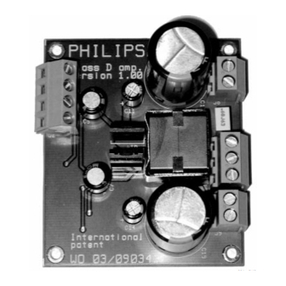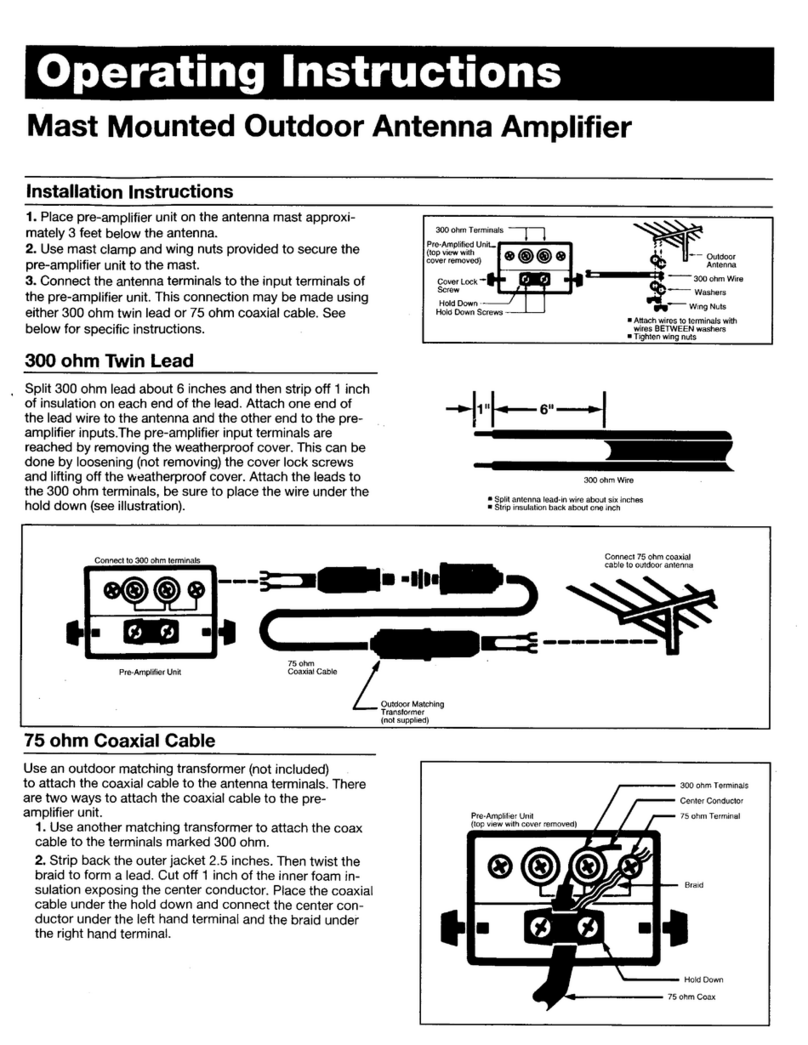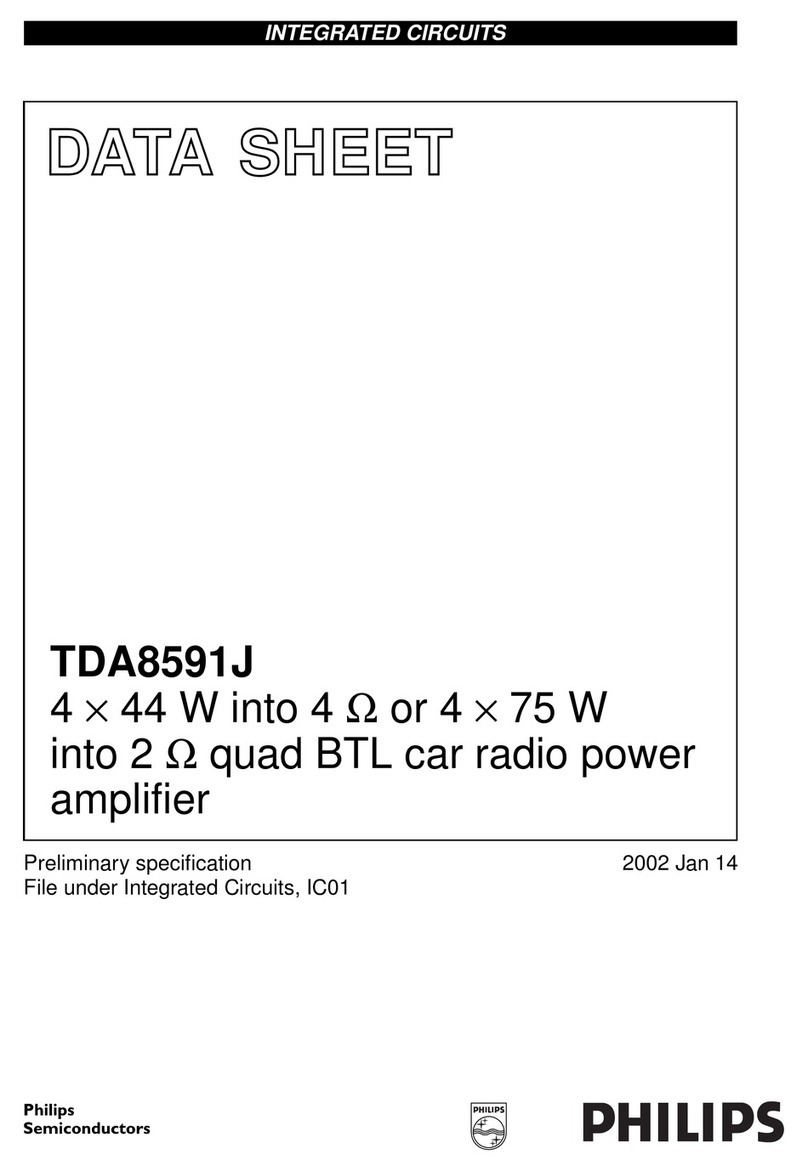Philips TDA8560Q User manual
Other Philips Amplifier manuals
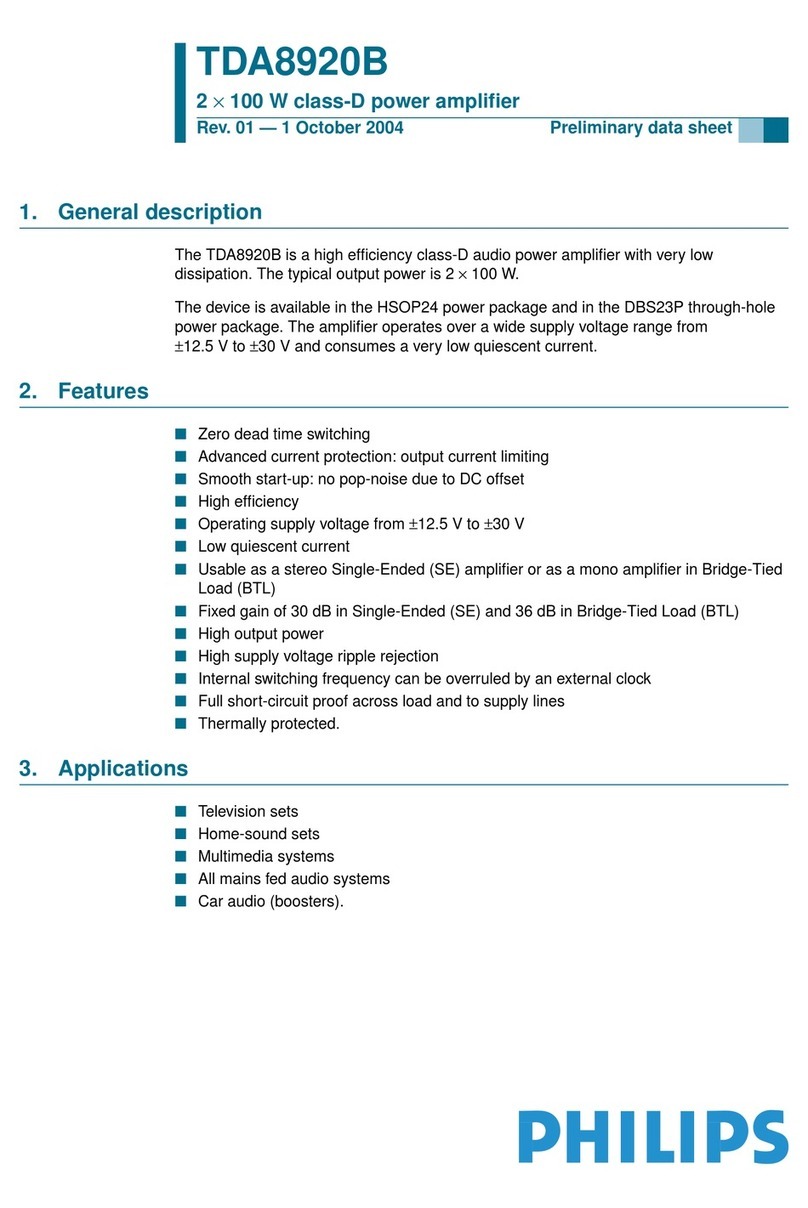
Philips
Philips TDA8920B User manual
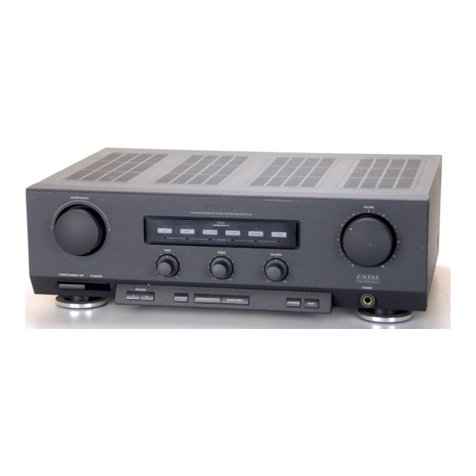
Philips
Philips Amplifier User manual

Philips
Philips BGY1916 User manual

Philips
Philips SDW5005 User manual

Philips
Philips BGY685AD User manual
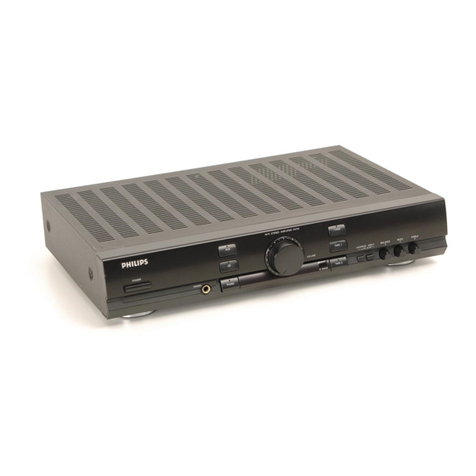
Philips
Philips FA741/00 User manual

Philips
Philips 22 AH 793 User manual
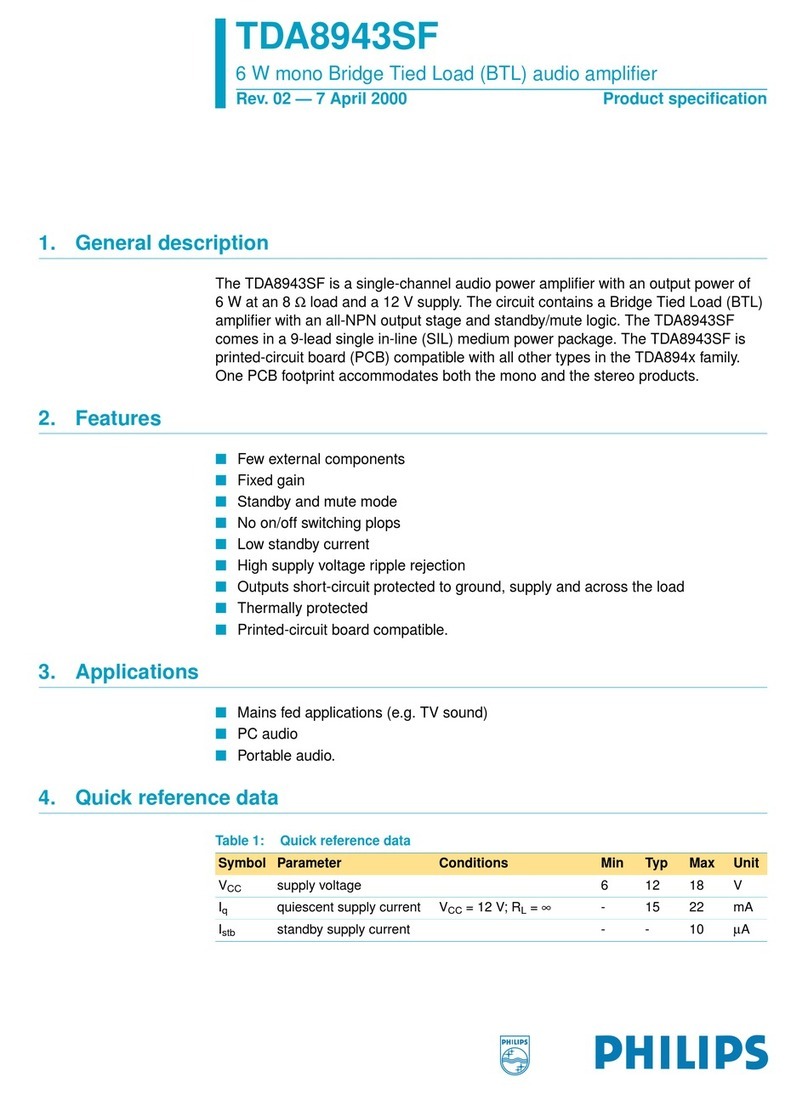
Philips
Philips TDA8943SF User manual
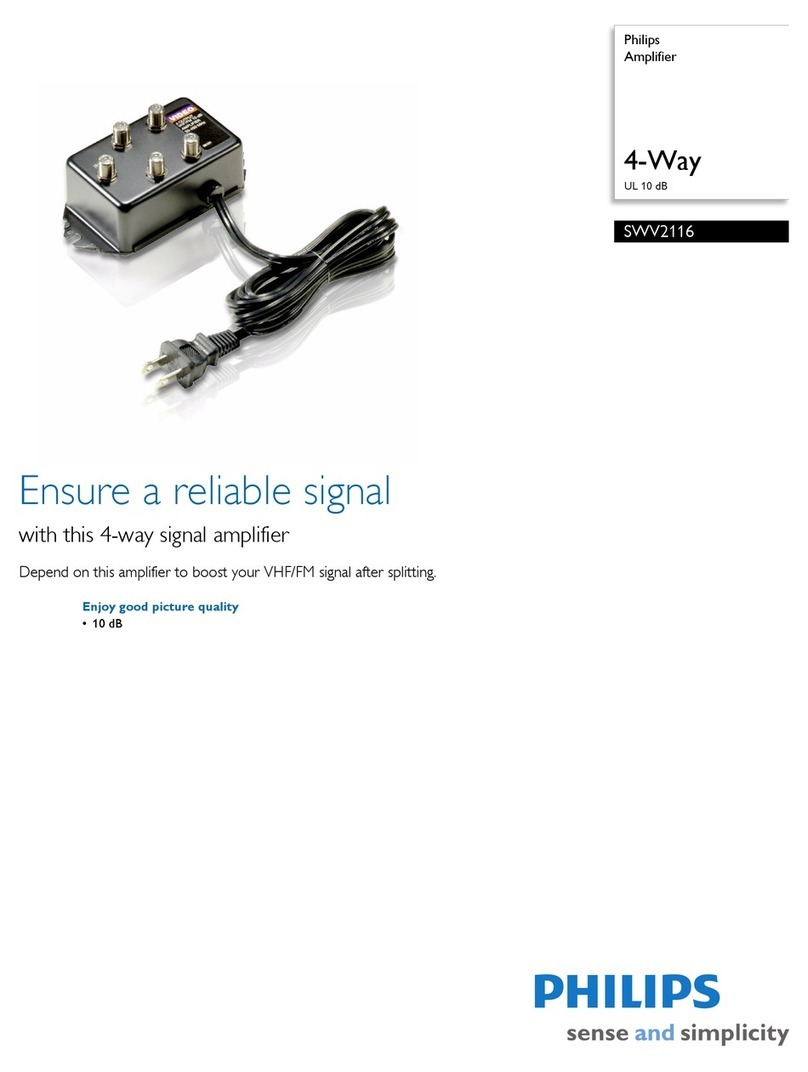
Philips
Philips SWV2116 User manual
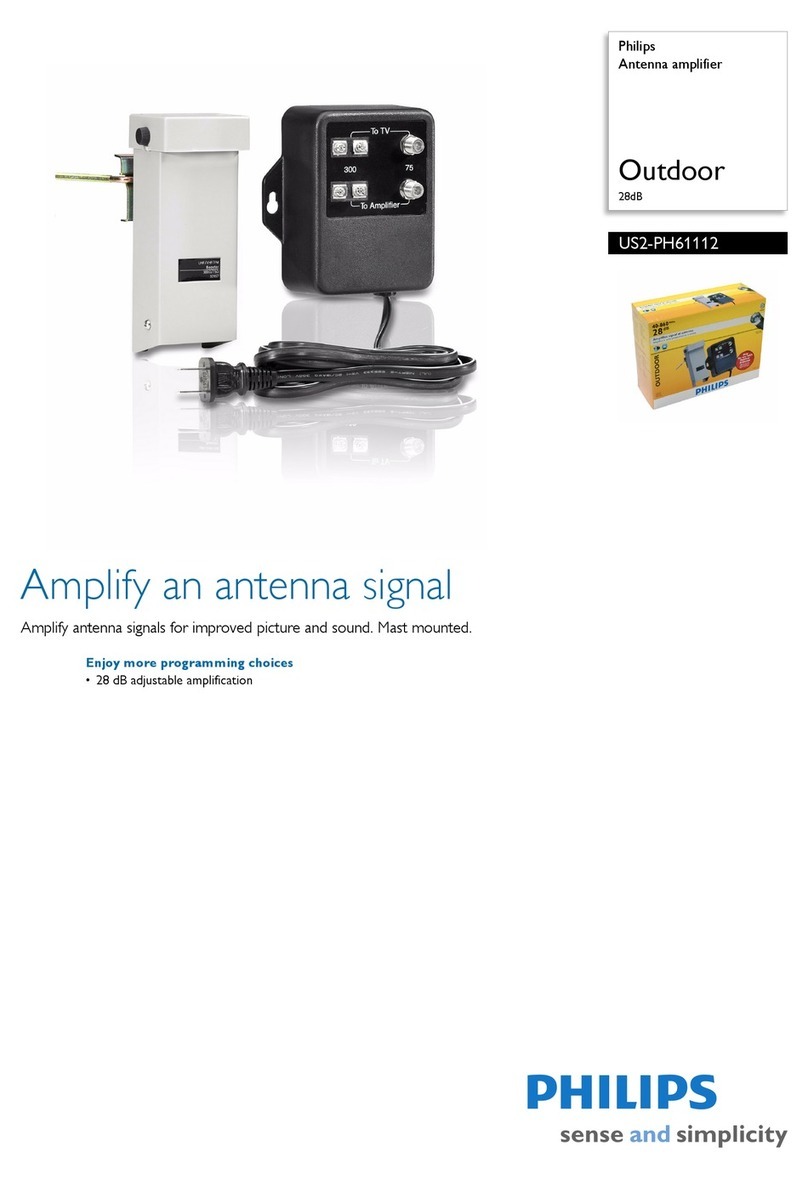
Philips
Philips US2-PH61112 User manual
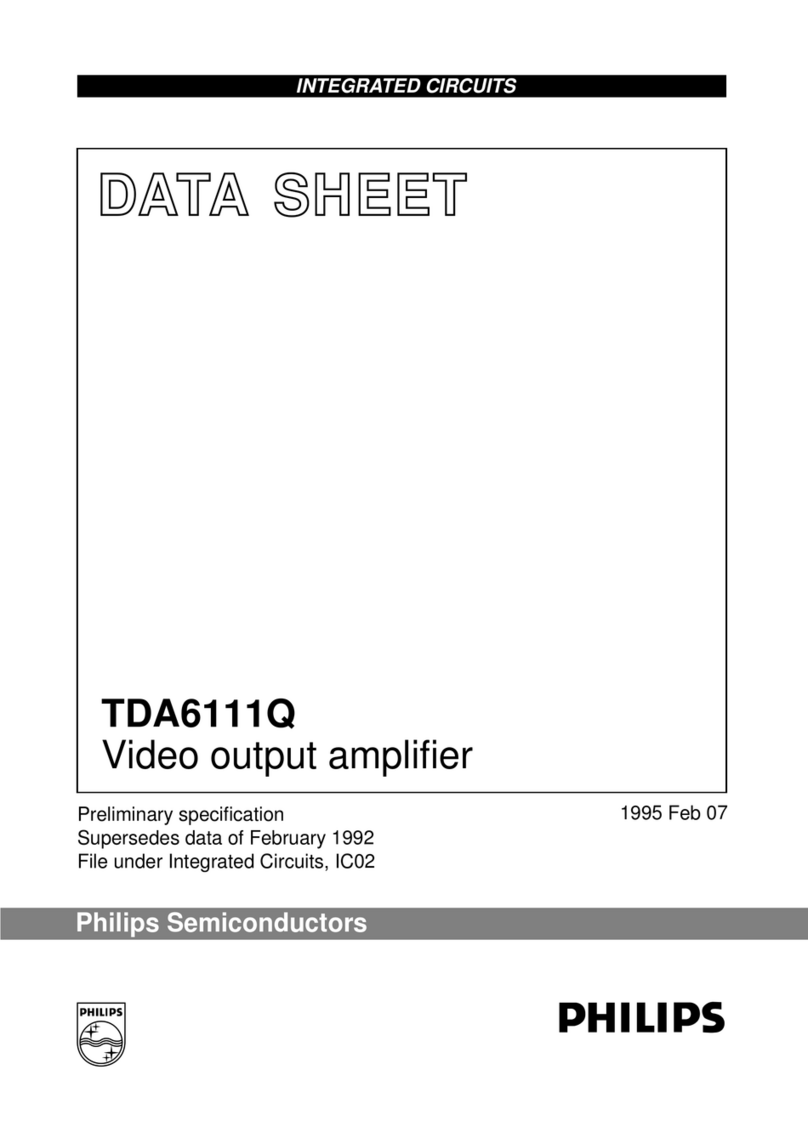
Philips
Philips TDA6111Q User manual

Philips
Philips PM 3344 User manual

Philips
Philips BGY685AL User manual
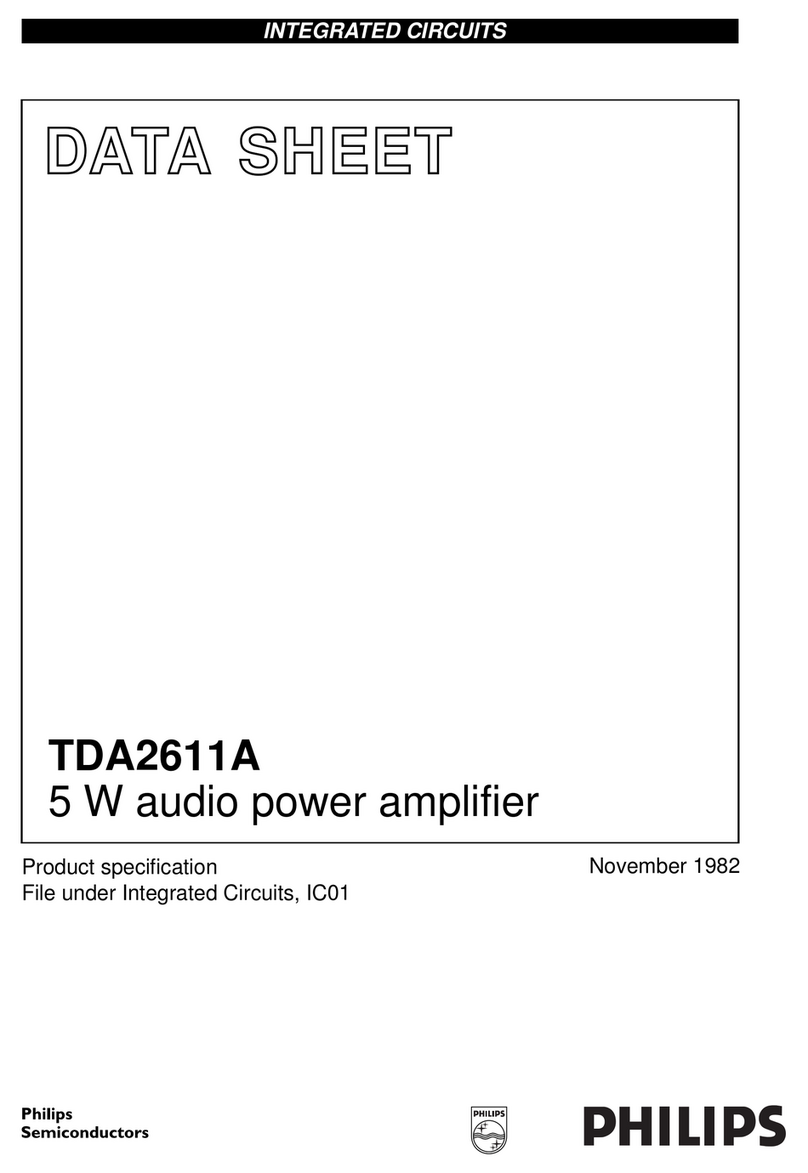
Philips
Philips TDA2611A User manual
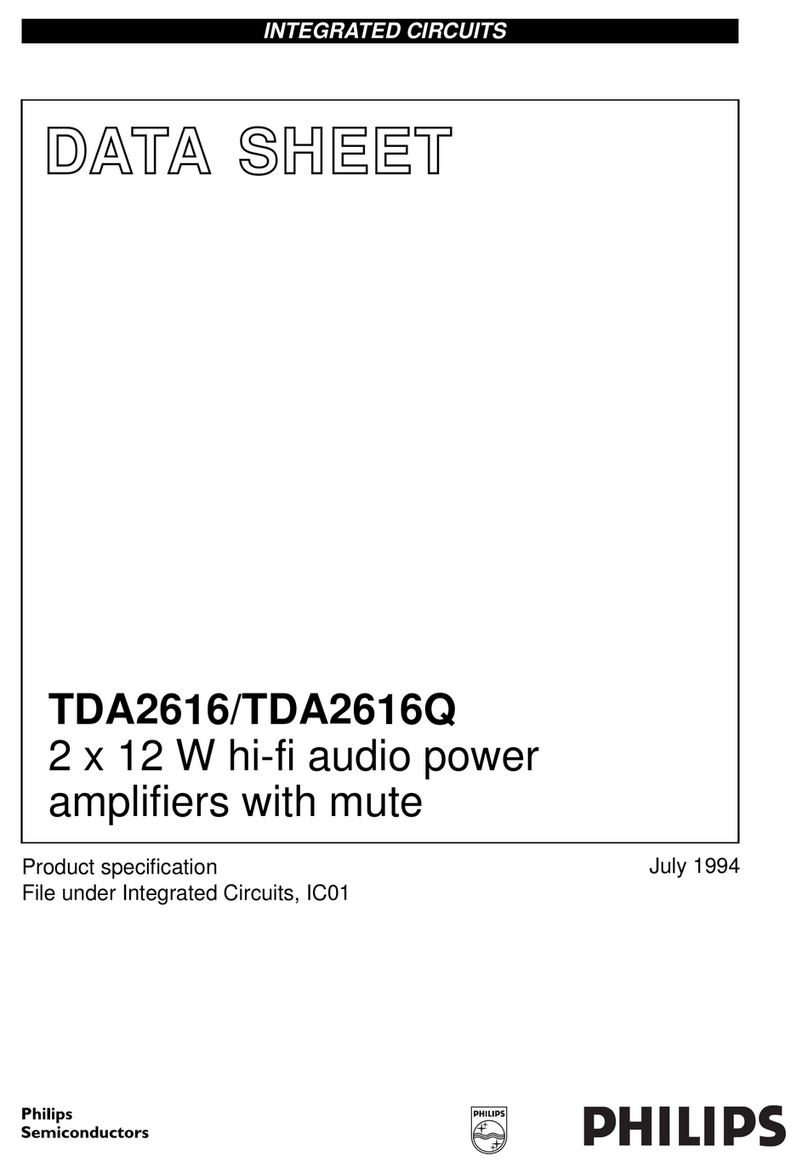
Philips
Philips TDA2616 User manual

Philips
Philips DFA 888 User manual
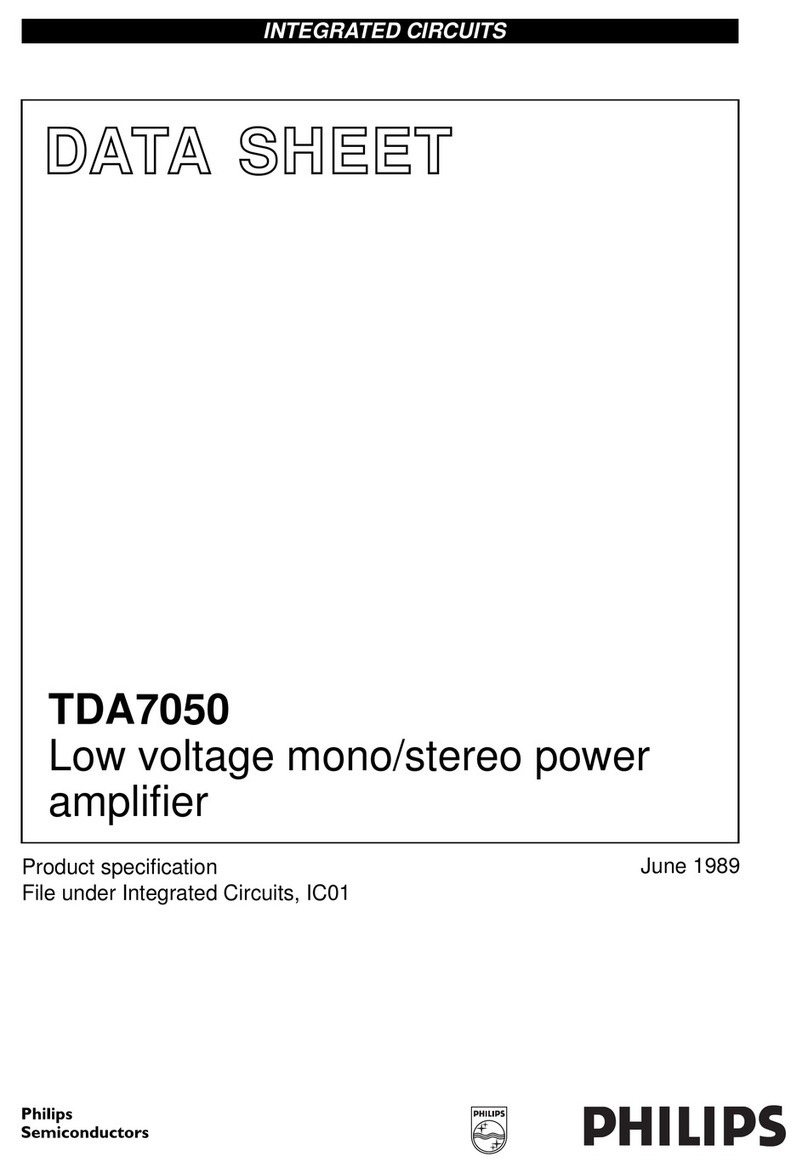
Philips
Philips TDA7050 User manual

Philips
Philips 22AH309/00 User manual
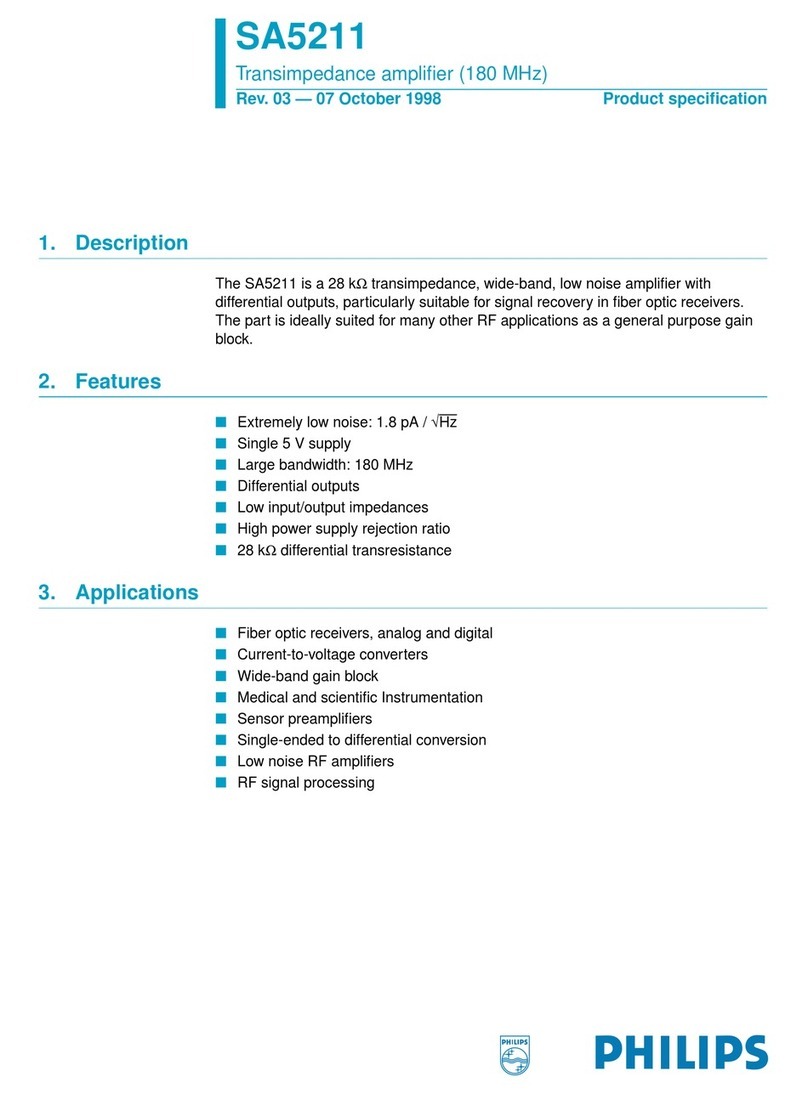
Philips
Philips SA5211 Owner's manual
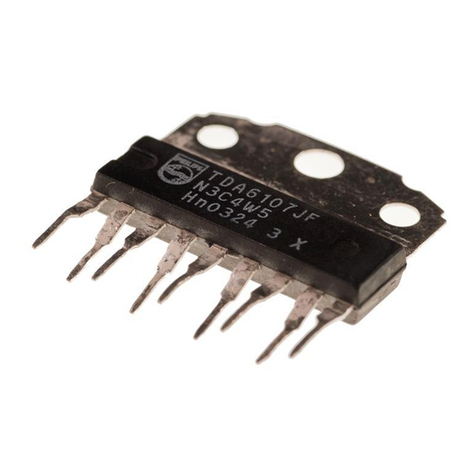
Philips
Philips TDA6107JF User manual
